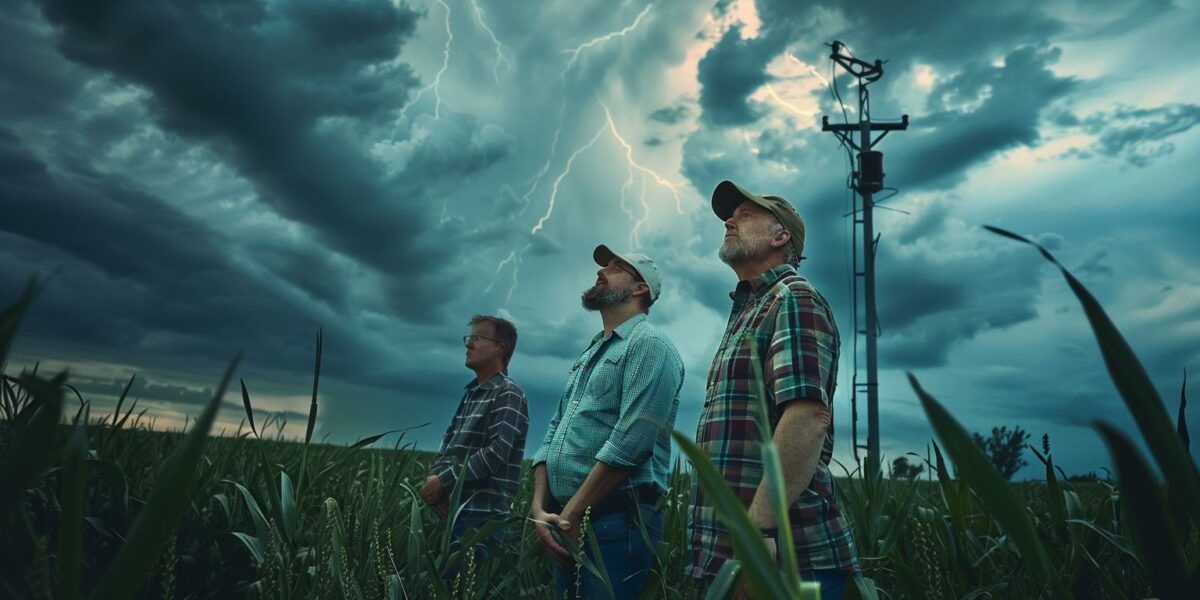Climate Challenges in Agriculture
Agricultural communities globally are on the frontlines of climate hazards like droughts, floods, and heatwaves. These extreme weather conditions can devastate agrifood systems, threatening food security in terms of availability, access, utilization, and stability. Water scarcity from droughts hinders crop growth, while floods can obliterate harvests and essential infrastructure.
Heatwaves present another critical challenge, causing heat stress in both crops and livestock, leading to reduced productivity and increased mortality rates. The impact is particularly severe in developing nations where resources are limited, and infrastructure is often inadequate to handle such climate stresses.
A proactive approach to managing disaster risks in agriculture can significantly mitigate these vulnerabilities. By adopting early warning systems and preparedness measures, agricultural communities can better withstand and adapt to the changing climate.
Innovative Early Warning Systems
The Early Warnings for All (EW4All) initiative aims to provide life-saving early warning systems against hazardous weather, water, or climate events to every individual on the planet by 2027. This initiative is a pivotal part of the UN Secretary-General’s agenda to ensure climate justice for those most affected by climate change.
Despite the critical need, only half of the world’s countries have adequate multi-hazard early warning systems, and fewer have the necessary regulatory frameworks to link these warnings to emergency response plans. The gaps in the global observing system further challenge the generation of accurate forecasts.
The EW4All initiative unites the broader UN system, governments, civil society, and development partners across public and private sectors. This collaboration aims to enhance people-centered, comprehensive early warning systems that ensure no one is left behind.
- Improved collaboration among stakeholders
- Development of comprehensive early warning frameworks
- Focus on vulnerable populations
WMO and FAO’s Vital Roles
Leading the charge, the World Meteorological Organization (WMO) and the Food and Agriculture Organization (FAO) play crucial roles in the EW4All initiative. WMO spearheads observations, monitoring, analysis, and forecasting, while FAO brings its expertise in agricultural resilience and food security.
FAO’s contributions include generating risk knowledge and customizing early warning systems for farming communities. They also implement anticipatory actions to mitigate the impacts of climate shocks on agriculture and food security.
FAO actively participates in all four pillars of the multi-hazard early warning system (MHEWS) value cycle, emphasizing disaster risk knowledge and preparedness to respond effectively to climate extremes.
This collaboration ensures that early warning systems are tailored to the specific needs of agricultural communities, enhancing their resilience to climatic threats.
Case Study: Somalia
In Somalia, WMO and FAO’s partnership under the Somalia Water and Land Information Management (SWALIM) project exemplifies successful collaboration. This initiative enhances the country’s early warning capabilities through advanced meteorological and hydrological monitoring networks and sophisticated data management systems.
These tools are critical for supporting national disaster preparedness and response efforts, significantly boosting Somalia’s resilience to climate hazards. Integration of these systems into WMO’s data-sharing networks further strengthens forecast accuracy and early warning information.
Complementary efforts under the Climate Risk and Early Warning Systems (CREWS) initiative focus on strengthening early action systems for climate extremes in the Greater Horn of Africa.
Looking ahead, WMO and FAO plan to expand their collaboration to enhance early warning capacities in other regions, particularly those targeted under the EW4All initiative. They aim to ensure that vulnerable populations, especially those in climate-sensitive agricultural sectors, are better protected from the adverse impacts of climate hazards.



Dylan
Fantastic initiative! It’s about time we took serious steps to protect our agricultural communities. 👍
maxtitan
Hmmm, does anyone else think this is just a temporary fix? We need long-term solutions!
dylan
This sounds useful, but how much does it cost to set up these early warning systems?
james
Wow, this is amazing! How can small farmers access these advanced warning systems?
naomiradiance
Great job on highlighting the issues. But shouldn’t we also focus on reducing emissions, not just adapting?
Cleo
I’m excited to see the collaboration between WMO and FAO! How can we support these efforts locally?
katherine
Thanks for the article. But, I wonder, are these initiatives really enough to combat the severe impacts of climate change?
andrewcatalyst
Interesting read! How exactly are the early warning systems implemented in developing countries? 🌍